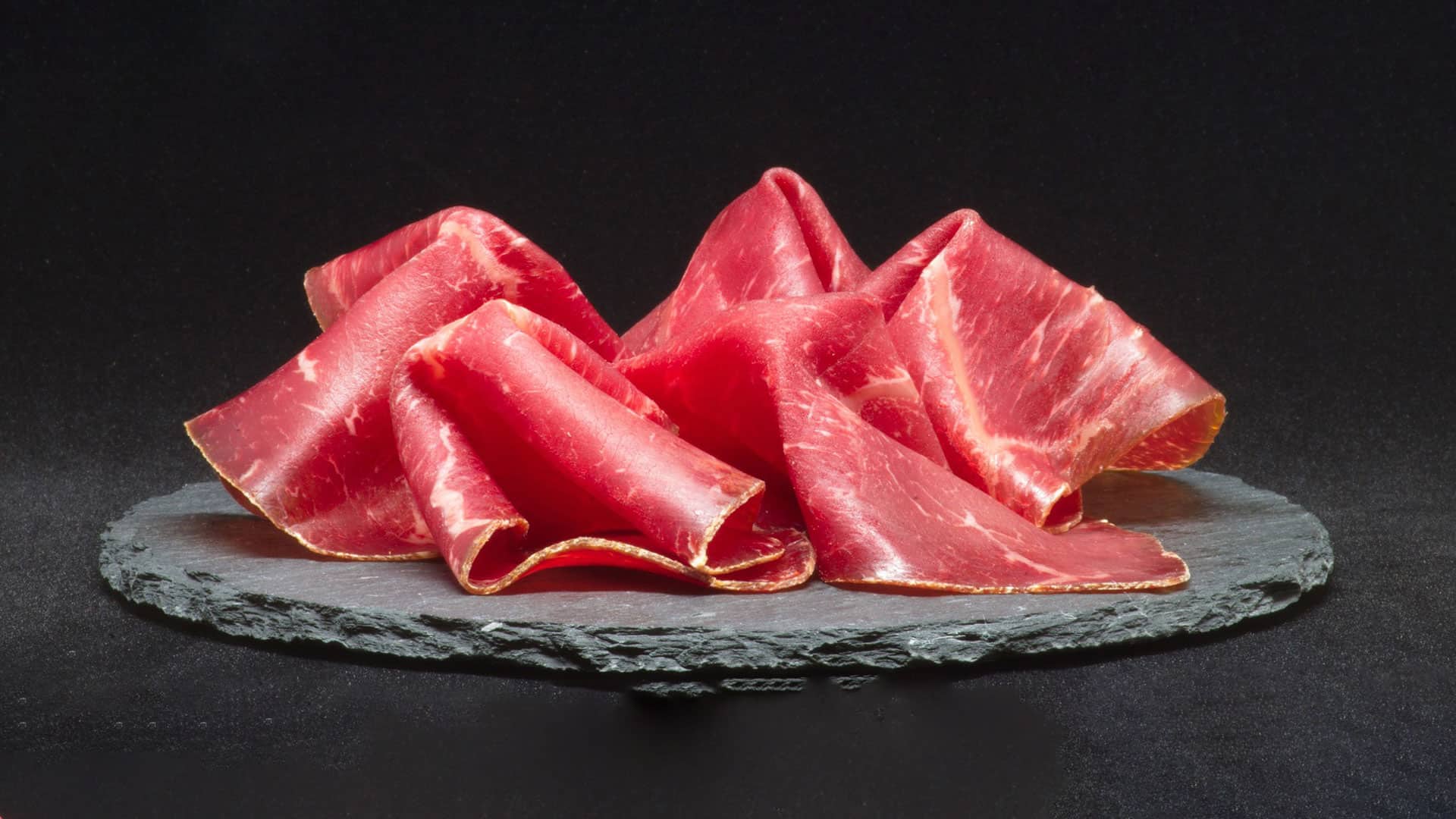Valais dried meat
Man’s ability to adapt to given conditions and to make clever use of climatic and geographical conditions, for example, has given rise to countless gourmet products. Alongside Valais wine, Valais dried meat is certainly one of these achievements.
What was more or less invented out of necessity (the production of dried meat was first mentioned in Valais in the 14th century) in order to survive the cold season unscathed thanks to preserved food supplies in the mountain regions, has developed into a unique delicacy to this day, which should definitely not be missed at a genuine Valais aperitif or a fine wine tasting, cut into wafer-thin slices.
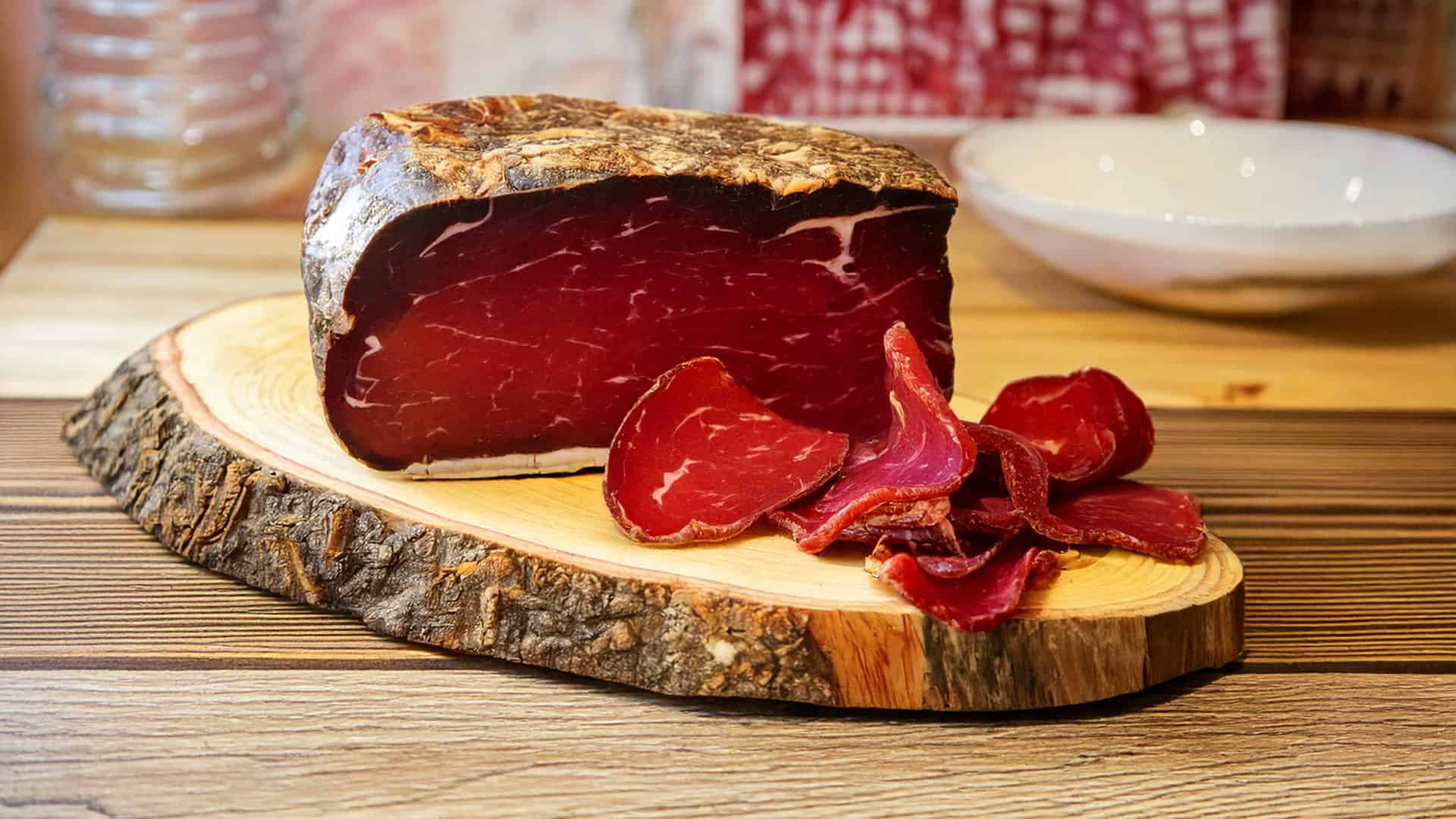
While smoking to preserve meat or fish has become established in other regions of Europe, it was clever shepherds in Valais who invented salting and drying to preserve meat thanks to the conditions provided by nature, such as sunshine, a dry climate and a constant light breeze, and perfected it more and more over the generations. Drying in the air can take place in a barn or in the attic – in the Valais Alps, this generally requires an altitude of 800 to 1000 meters.
While meat from abroad may also be used in dried meat from other Swiss regions, Valais dried meat must contain 100% Swiss beef as an ingredient. And, just as importantly, the meat may only be processed in Valais. In addition, it must only be meat from the stump of the cattle. This is protected and made clear to consumers by the IGP quality label. It stands for indication géographique protégée, in German GGA, protected geographical indication.
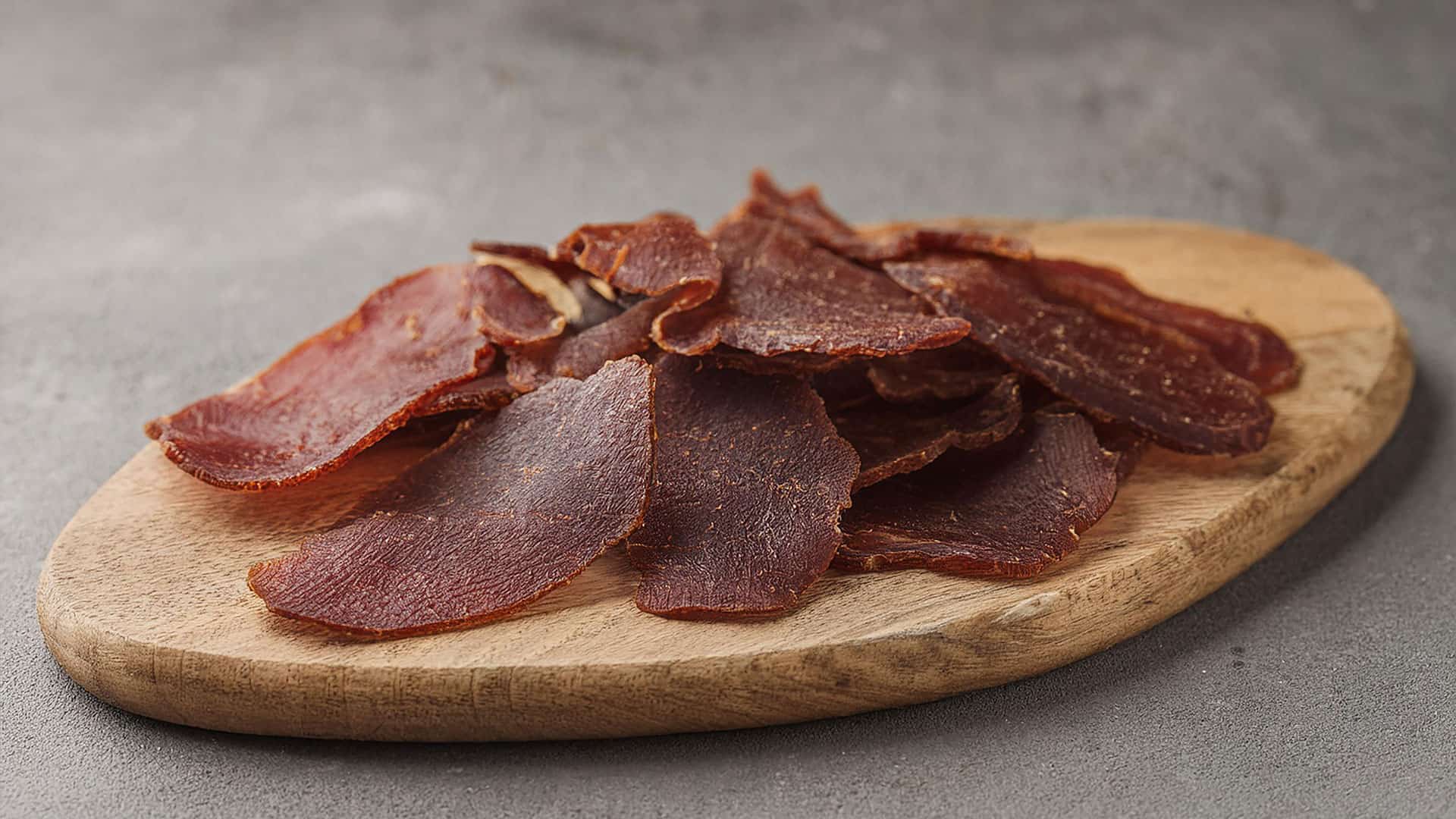
There are 35 producers of dried meat in Valais. At the beginning of the production process, the pieces of meat are all thoroughly cut and parried, i.e. fat and tendons are removed. The future dried meat is then marinated in a mixture of salt, herbs and spices. Each producer guards the recipe for this mixture like the apple of his eye. Experience has shown that individual mixtures of basil, savory, tarragon, cloves, garlic, coriander, lovage, bay leaf, marjoram, nutmeg, oregano, pepper, rosemary, sage, thyme and juniper are used. Other plants are also permitted, but they must not dominate the flavor of the mixture. And plants with a coloring effect such as curry, turmeric or paprika are generally prohibited.
The pieces of meat are then washed. They must be pressed no more than once to open the pores of the meat. Opening the pores allows the meat to breathe and gives it its typical rectangular shape. During the subsequent air-drying process, the pieces of meat lose 40-50% of their original weight. The drying phase can last between five and 16 weeks, depending on the size of the piece of meat. During this time, the dehydration not only develops the variety of flavors typical of Valais dried meat, it also leads to the formation of the noble mold coating as a characteristic surface, and the pieces of meat are also regularly checked by the manufacturer for perfect quality (appearance and smell of the dried meat) during this time.
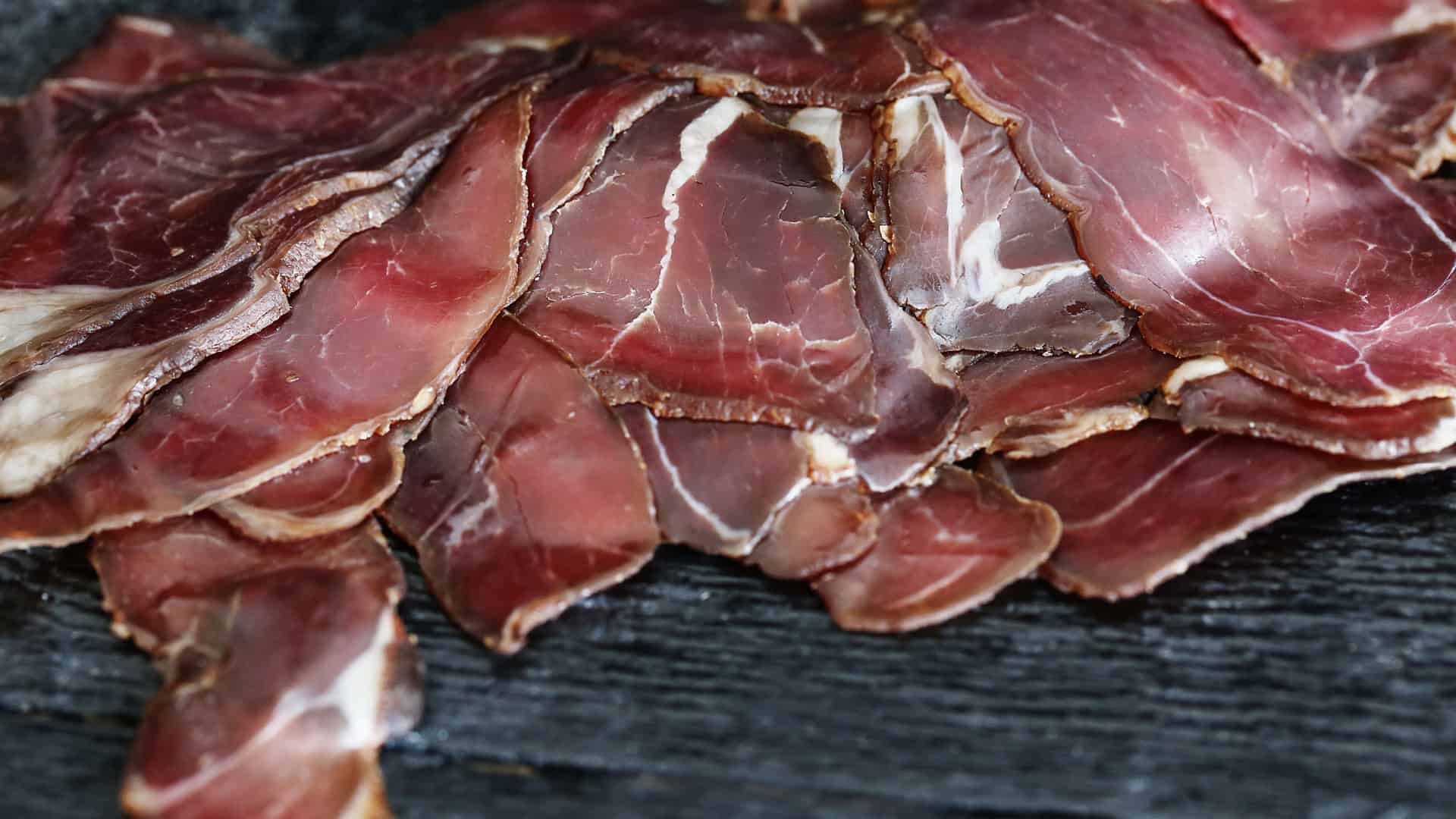
Valais dried meat can be recognized by its firm consistency and purple-red, uniform color. It is enjoyed cut into wafer-thin slices. Thanks to the air-drying process, the meat retains its very own flavor and delights with a delicate bouquet. Dried meat is generally eaten raw. It is sold in pieces or sliced all year round. Thanks to its variety of flavors, it can be enjoyed with a fine Valais white wine, a Valais red wine or even a Valais sparkling wine.
Stored dry and protected from light, it will keep for several weeks. Unlikely, because it is so popular and will be eaten quickly, but quite possible: dried meat can also be frozen for several months without any problems.
Diego Mathier, three times best Swiss winemaker in 2018, 2011 and 2007, in the picturesque wine village of Salgesch, offers a Valais platter, including Valais dried meat, to accompany a wine tasting on advance reservation. Or you can enjoy it in the Barrique restaurant of the successful Salgesch winegrower – in fine weather on the sheltered sun terrace and of course always with a good glass of Mathier wine, a very special experience.
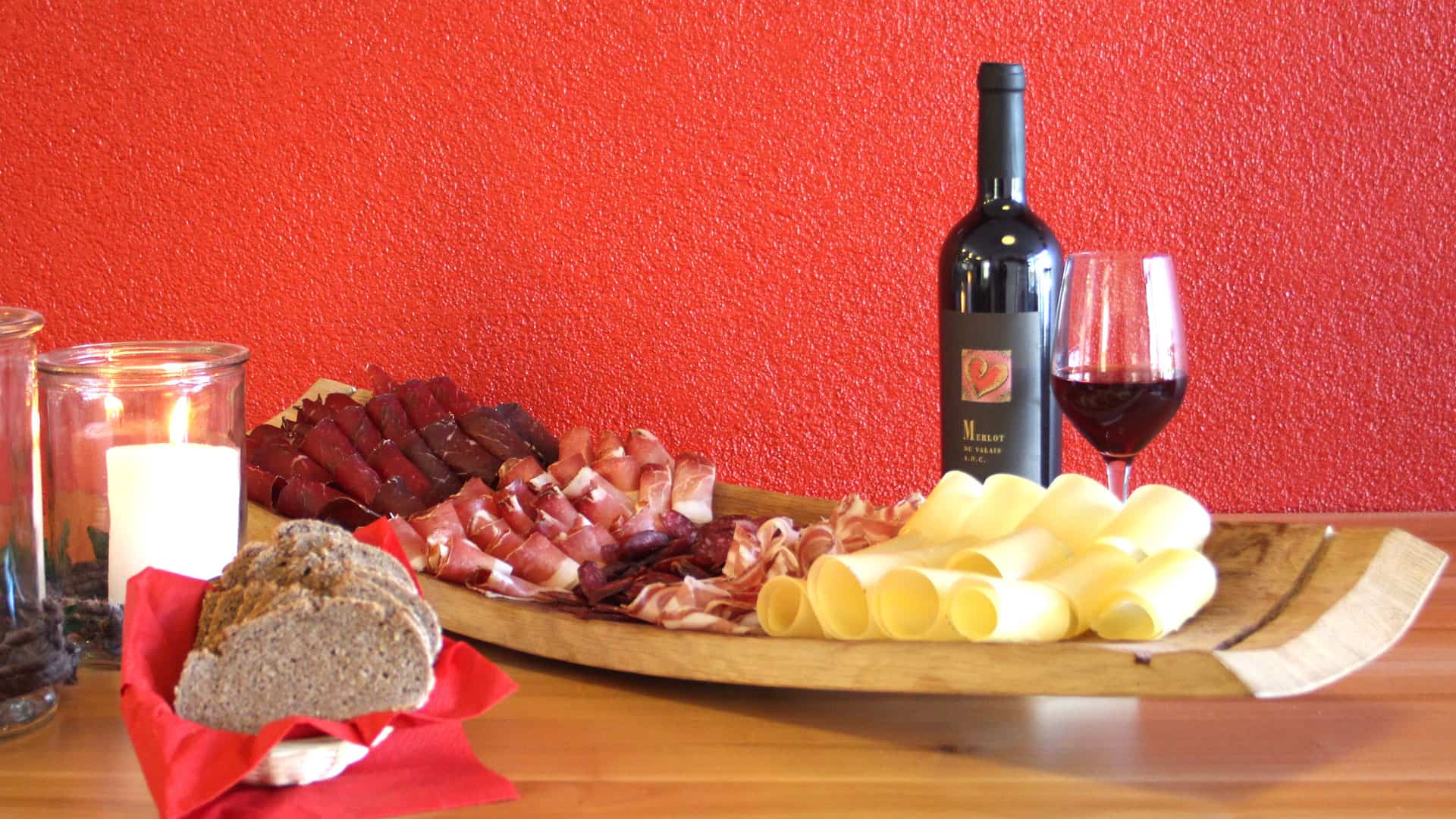
FAQ:
What makes Valais dried meat so special?
Valais dried meat may only be produced from beef from Switzerland. In addition, the meat must be processed in Valais. In turn, only beef stumps may be processed as meat.
What does the IGP/GGA label mean for Valais dried meat?
IGP stands for indication géographique protégée or GGA, protected geographical indication. It is used by the producer of Valais dried meat to prove that the cattle were born, fattened, slaughtered and cut exclusively in Switzerland and that the corresponding meat from the corner, undercut, round nut, flat nut or round mock (fish) was salted and dried exclusively in the canton of Valais.
How long does the air-drying phase of Valais dried meat last?
Depending on the size of the piece of meat, the air-drying phase lasts between five and 16 weeks. During this time, the dehydration process not only develops the variety of flavors typical of Valais dried meat. During this time, the pieces of meat are also regularly checked by the producer for perfect quality (appearance and smell of the dried meat).

